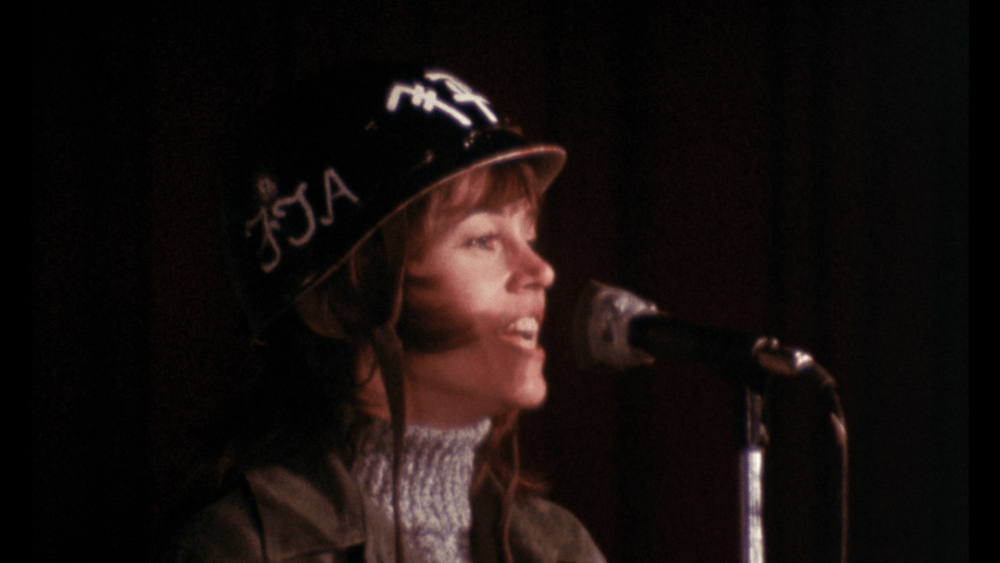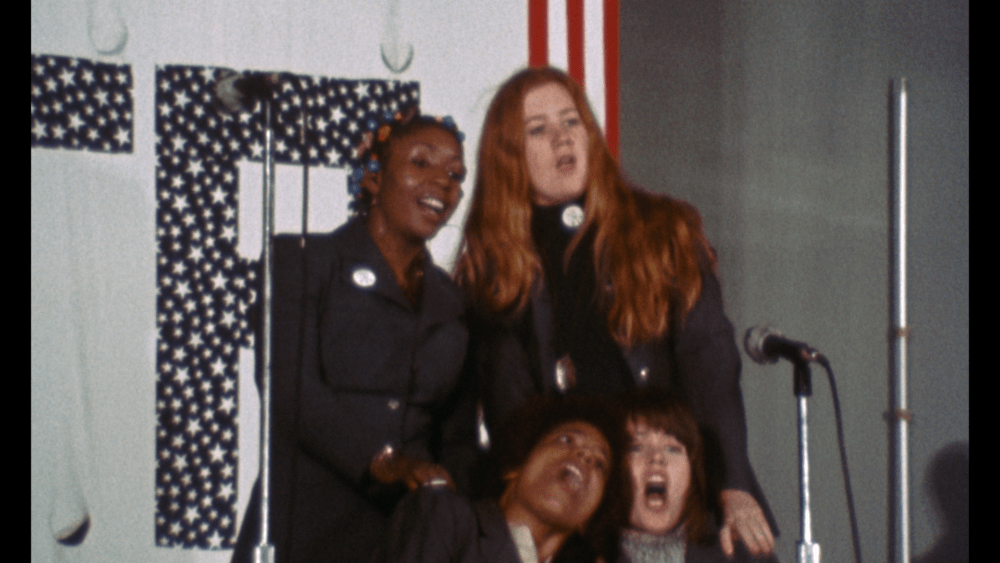Advertisement
Commentary
1972 Antiwar Documentary 'F.T.A' Returns To Screens Almost 50 Years After It Was Pulled From Theaters

According to legend, it was a phone call from Nixon’s White House that made the movie disappear. After barely a week in theaters during August of 1972, Samuel Arkoff’s American International Pictures abruptly withdrew the raucous antiwar documentary “F.T.A.” from release. The official story from the studio was that Arkoff pulled the picture intending to rerelease it when colleges were back in session, while others blamed headlines surrounding the film’s star Jane Fonda, who had just returned from a trip to Hanoi where she’d blundered into an ill-advised photo op with an anti-aircraft gun. It was highly uncharacteristic of an exploitation mogul like Arkoff to take such a steep financial loss on any movie without first flogging it to death, but whatever the reason, “F.T.A” went MIA and wasn’t publicly screened again until 2009.
Better late than never, a new 4K restoration of the film starts streaming at the Brattle Theatre's virtual screening room — the Brattlite — this weekend, finally giving us a chance to see what all the fuss was about almost 50 years later. Directed by Francine Parker, the film chronicles the Pacific Rim stretch of Fonda and Donald Sutherland’s “Free The Army” tour, a musical comedy revue modeled on Bob Hope’s USO shows but with an antiwar agenda. The “Klute” co-stars had been travelling around the country performing at coffeehouses near army bases, meeting with GIs and area organizers. An early incarnation of the show had co-stars such as Peter Boyle, Elliott Gould and Howard Hesseman, but Fonda deemed the lineup too white and too male, and fully integrated the cast by the time they headed overseas.

Sutherland was already a counterculture hero in Army fatigues thanks to his loopy performances in “The Dirty Dozen” and “Kelly’s Heroes,” but it was playing the lecherous Captain “Hawkeye” Pierce in Robert Altman’s “M*A*S*H” the year before the tour that made him an icon of irreverence. Fonda had only recently shed her blonde sex kitten image and emerged as an actress of great substance in the aforementioned “Klute,” so a lot of audiences were surprised to see this mousy-haired brunette take the stage wearing jeans and no makeup when they’d been expecting Barbarella.
The tour’s title comes from a play on the old Army recruiting slogan, “Fun, Travel and Adventure,” an acronym adopted by a lot of GIs with a word up front that isn’t “free.” Like Bob Hope’s USO shows, it’s a mix of bawdy comedy sketches and vaudevillian song parodies, with a few serious speeches and folk tunes peppered amid the silliness. Honestly, the show seems like something that would be a lot of fun if you were in the room, but that energy doesn’t exactly translate to the screen. (Those Hope specials were also pretty dire, as I recall. I used to watch them on TV when I was a kid because I had a thing for Ann Jillian, and when my sister wanted to insult me she’d say, “You’re about as funny as Bob Hope,” which would have been a huge compliment in the 1940s.)
This is probably why the movie features relatively few clips of the actual performances, devoting most of its screen time instead to the enlisted men and women encountered by the cast during their stops in Hawaii, Japan and the Philippines. That’s where “F.T.A.” becomes a fascinating time capsule, allowing the soldiers to voice their frustrations with the war and other aspects of American imperialism. It’s tough not to notice a kind of cultural contamination in the areas immediately surrounding these bases, with brothels and bars designed to service servicemen, as neon Coca-Cola signs loom large over the farmlands. The people we meet are deeply disillusioned draftees in the midst of an incredibly unpopular war that just won’t seem to end no matter how many politicians say they want it over.

Watching the film today it’s shocking to hear soldiers speak out like this. After two decades of two wars I’m not sure anybody even knows why we’re fighting anymore, military message discipline remains on point, with the slightest criticism of overseas entanglements decried as being disrespectful to the troops. It’s astonishing to see so many of them with fists raised in solidarity at these shows, or to meet the brave men of the USS Coral Sea, a thousand of whom signed a petition protesting the Vietnam War. My ears bleed imagining how our conservative media would cover that story, or the consequences that would be incurred by any Hollywood celebrities who tried something like an “F.T.A.” tour today.
Of course, Fonda paid dearly over the years for her activism. As a kid I remember seeing bumper stickers that said: “Vietnam Vets Are Not Fonda Jane.” It’s curious that Sutherland never encountered similar blowback, but then again, I guess he never let himself be photographed sitting on an enemy’s anti-aircraft gun. Anyhow, it feels like popular culture, at least, has forgiven Fonda, considering the bevy of awards she’s been getting lately. (And who else would accept a BAFTA while getting arrested at a climate change protest?) “F.T.A.” is wildly uneven as a film, but in this age of performative social media echo chambers, it’s energizing to see these activists out there meeting with soldiers and citizens. Even more importantly, they're listening.
“F.T.A.” starts streaming at the Brattlite on Friday, March 5th.
